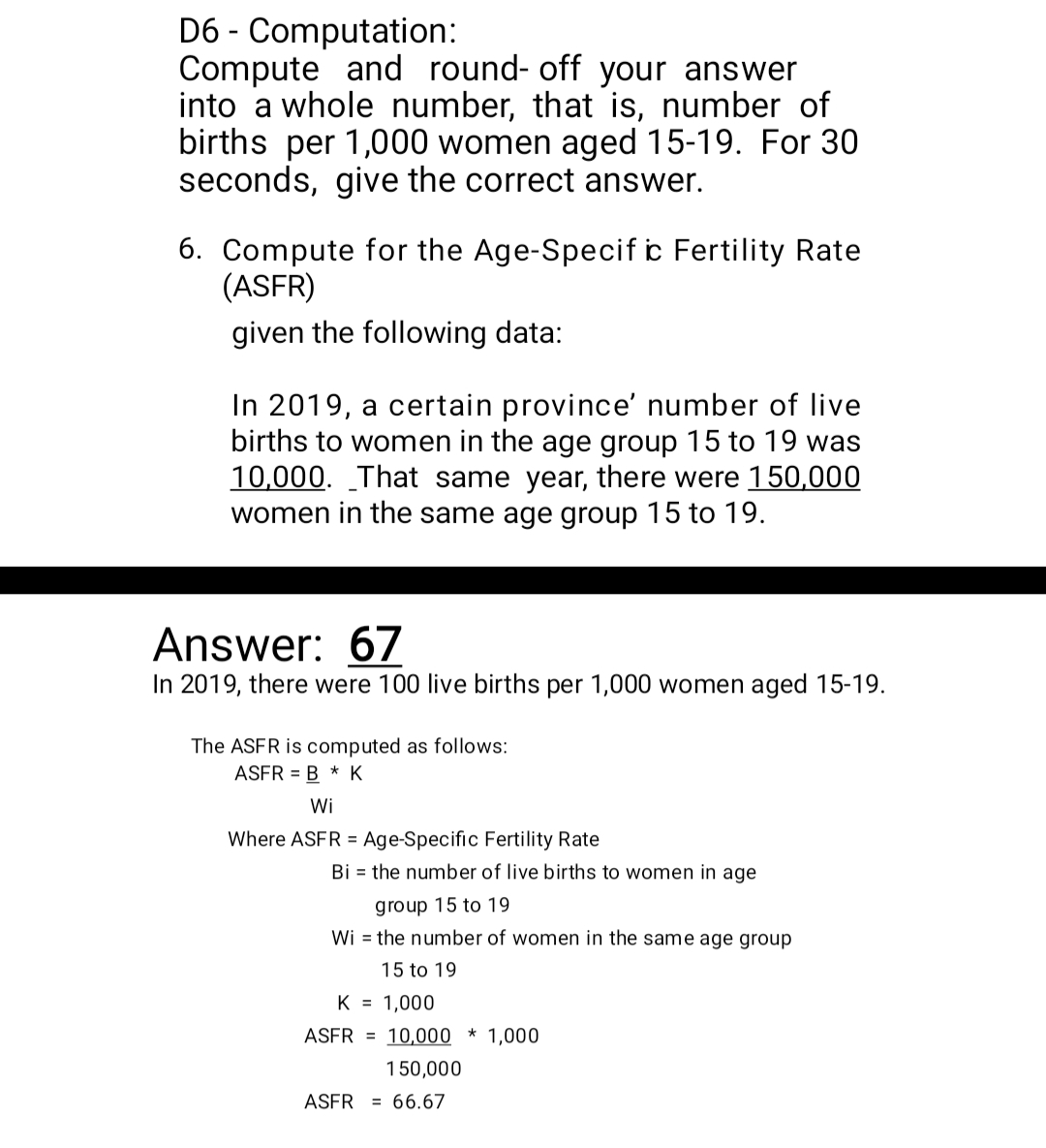Compute for the Age-Specific Fertility Rate (ASFR) given the following data: In 2019, a certain province's number of live births to women in the age group 15 to 19 was 10,000. That... Compute for the Age-Specific Fertility Rate (ASFR) given the following data: In 2019, a certain province's number of live births to women in the age group 15 to 19 was 10,000. That same year, there were 150,000 women in the same age group 15 to 19.

Understand the Problem
The question is asking to compute the Age-Specific Fertility Rate (ASFR) using the number of live births per 1,000 women aged 15-19 and the total number of women in that age group. We need to perform a calculation based on the given numbers and round the answer to the nearest whole number.
Answer
$67$
Answer for screen readers
The Age-Specific Fertility Rate (ASFR) is $67$.
Steps to Solve
- Identify the values needed for the calculation
We have the following values:
- ( B_i ): Number of live births to women aged 15-19 = 10,000
- ( W_i ): Total number of women aged 15-19 = 150,000
- ( K ): A constant used for per 1,000 women = 1,000
- Set up the formula for ASFR
The formula to calculate the Age-Specific Fertility Rate (ASFR) is:
$$ ASFR = B_i \times \frac{K}{W_i} $$
- Plug in the values into the formula
Substituting the known values into the formula gives:
$$ ASFR = 10,000 \times \frac{1,000}{150,000} $$
- Perform the calculations
First, calculate the fraction:
$$ \frac{1,000}{150,000} = \frac{1}{150} $$
Now substitute back:
$$ ASFR = 10,000 \times \frac{1}{150} $$
Which simplifies to:
$$ ASFR = \frac{10,000}{150} $$
- Calculate ASFR
Now perform the division:
$$ ASFR = 66.67 $$
- Round to the nearest whole number
Rounding ( 66.67 ) gives us ( 67 ).
The Age-Specific Fertility Rate (ASFR) is $67$.
More Information
The ASFR reflects the number of live births per 1,000 women in a specific age group, helping demographers and health planners evaluate fertility patterns.
Tips
- Forgetting to use the correct constant ( K ) for scaling births per 1,000 women.
- Failing to round the final answer to the nearest whole number, especially when decimal results are obtained.